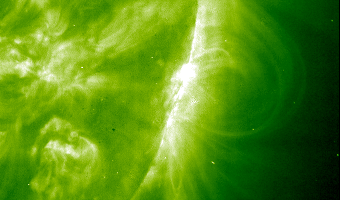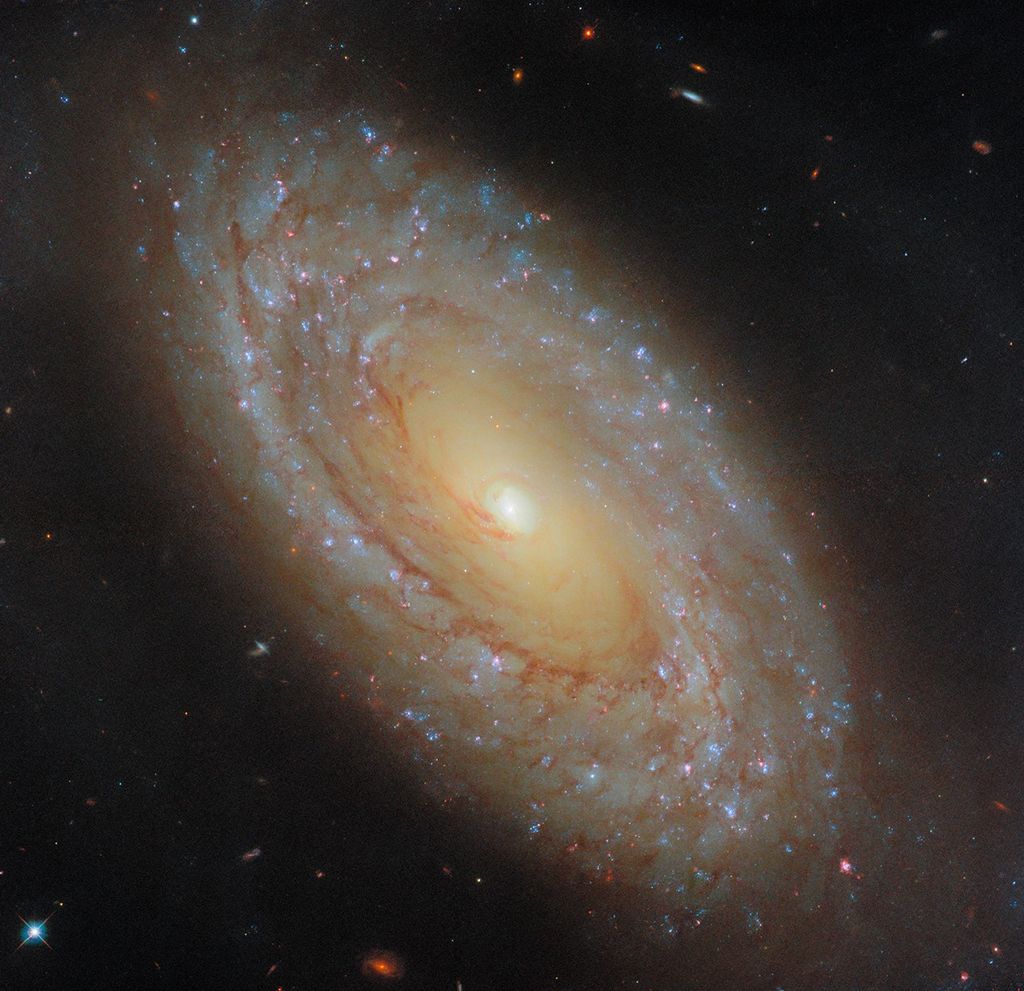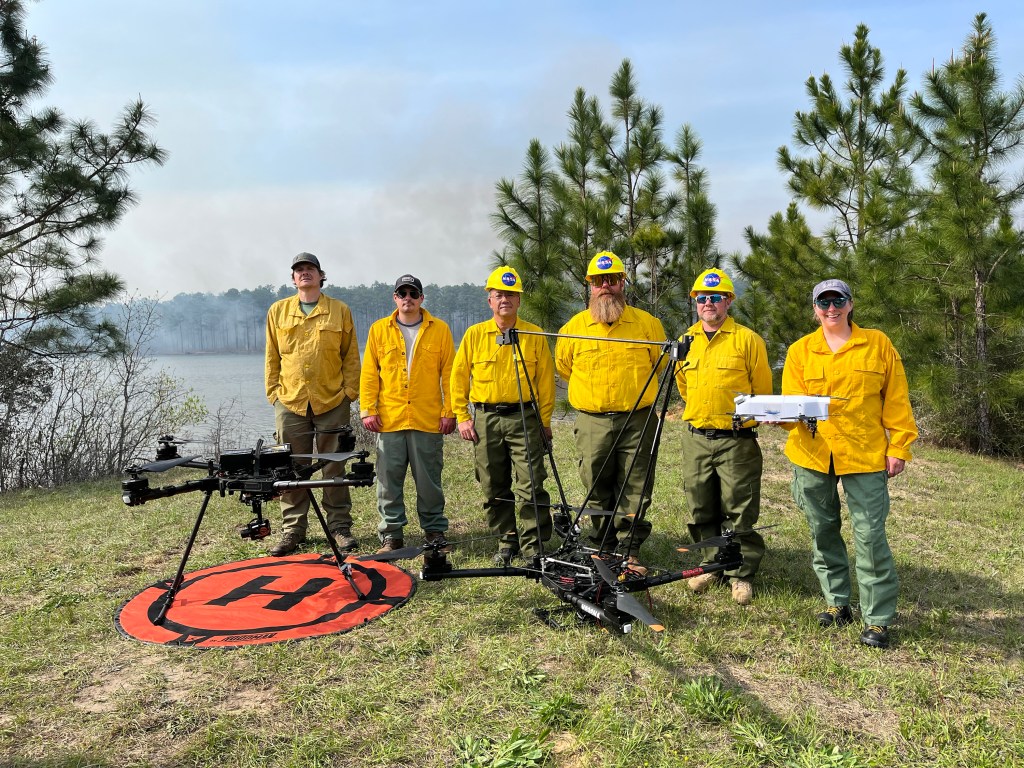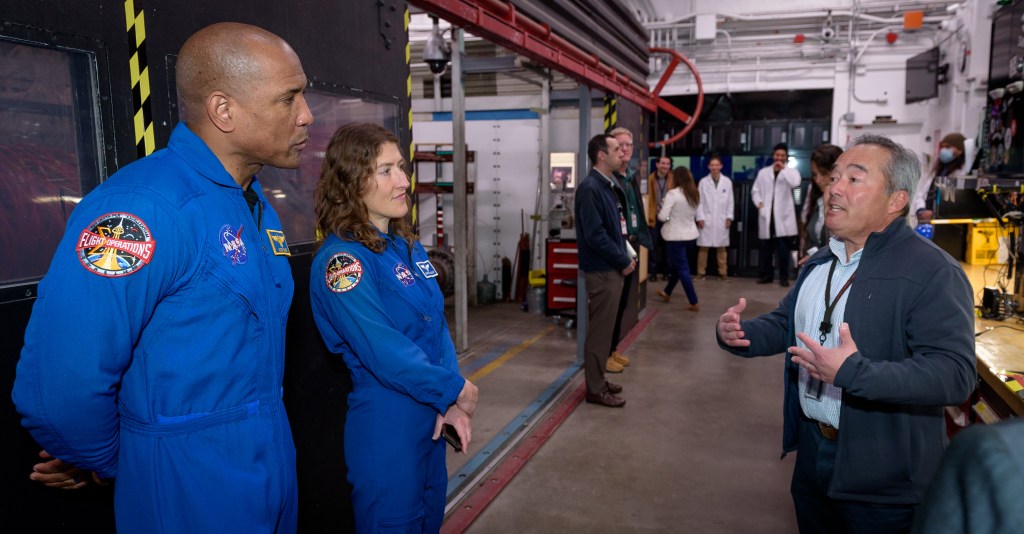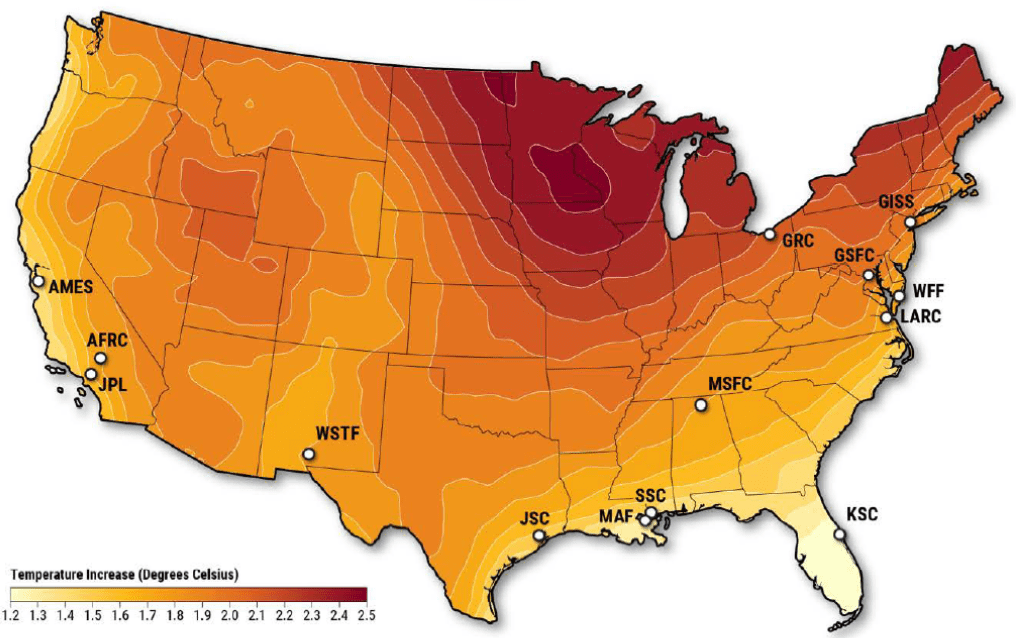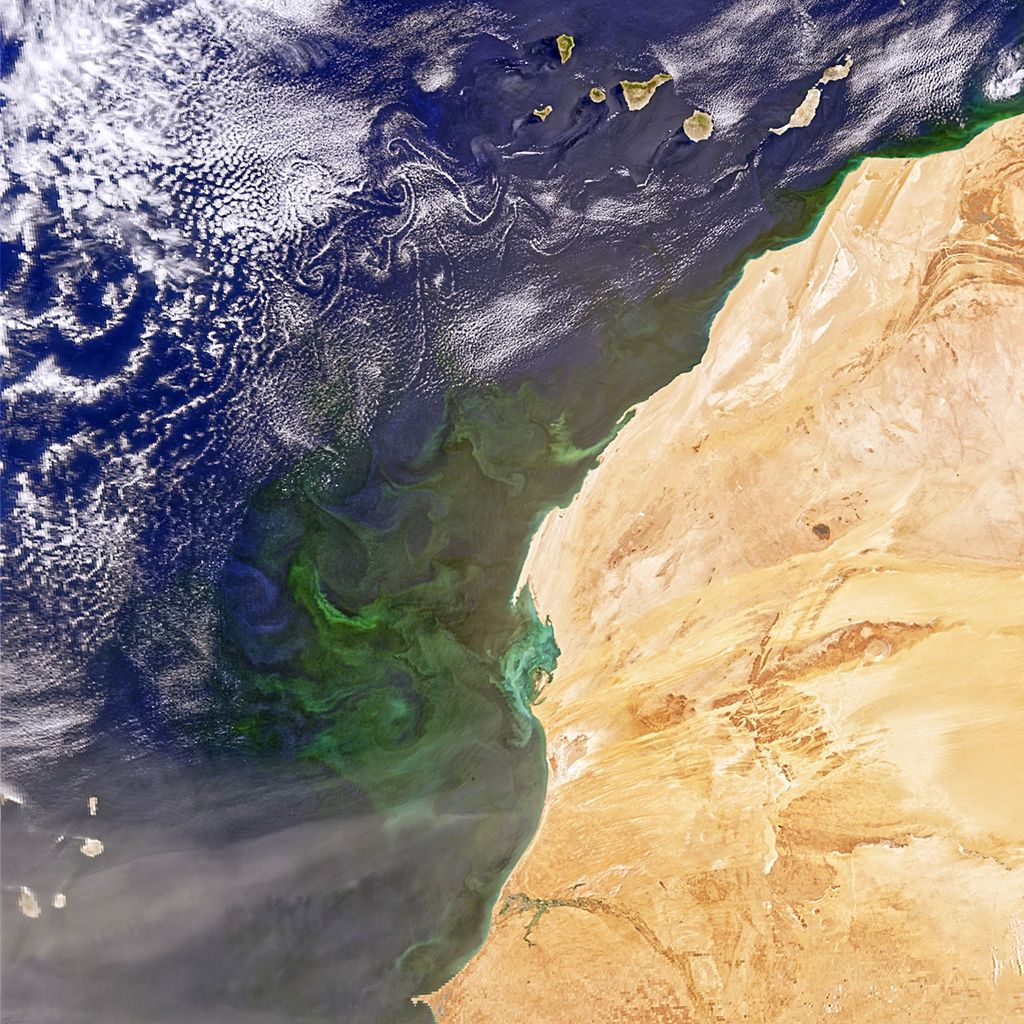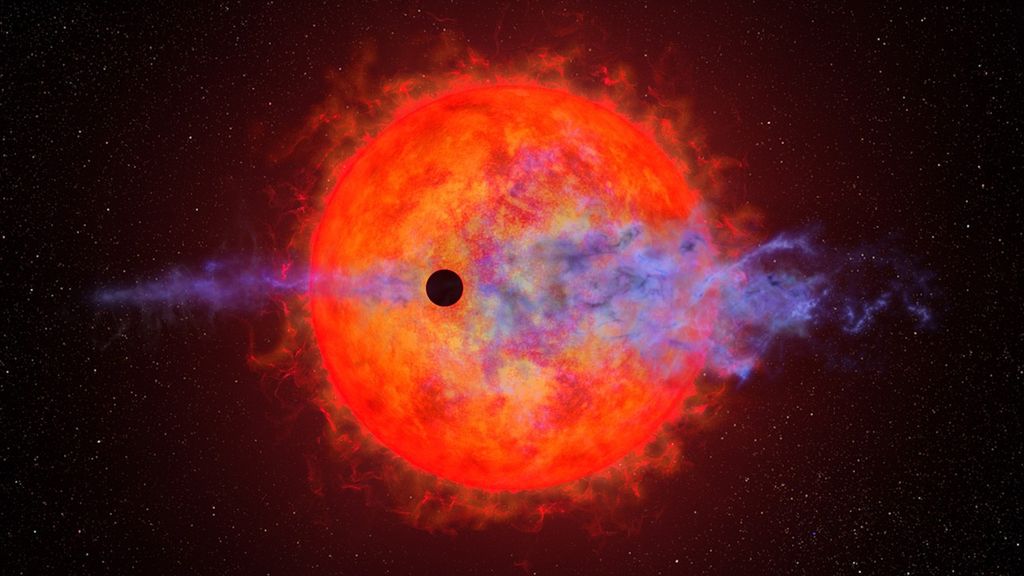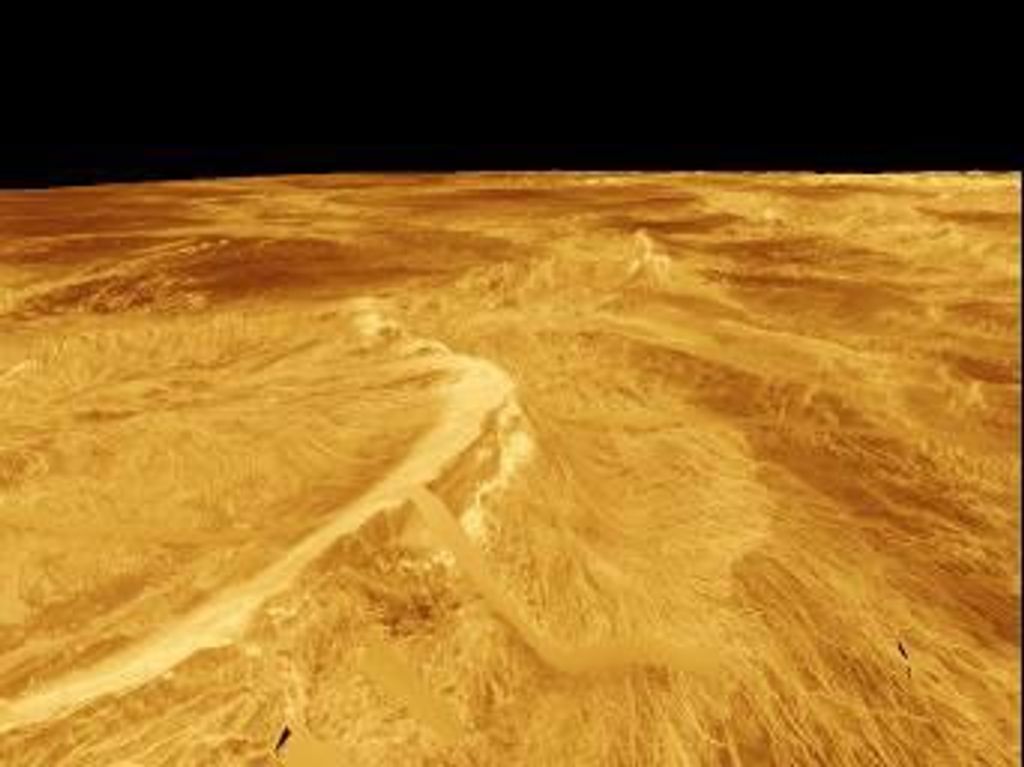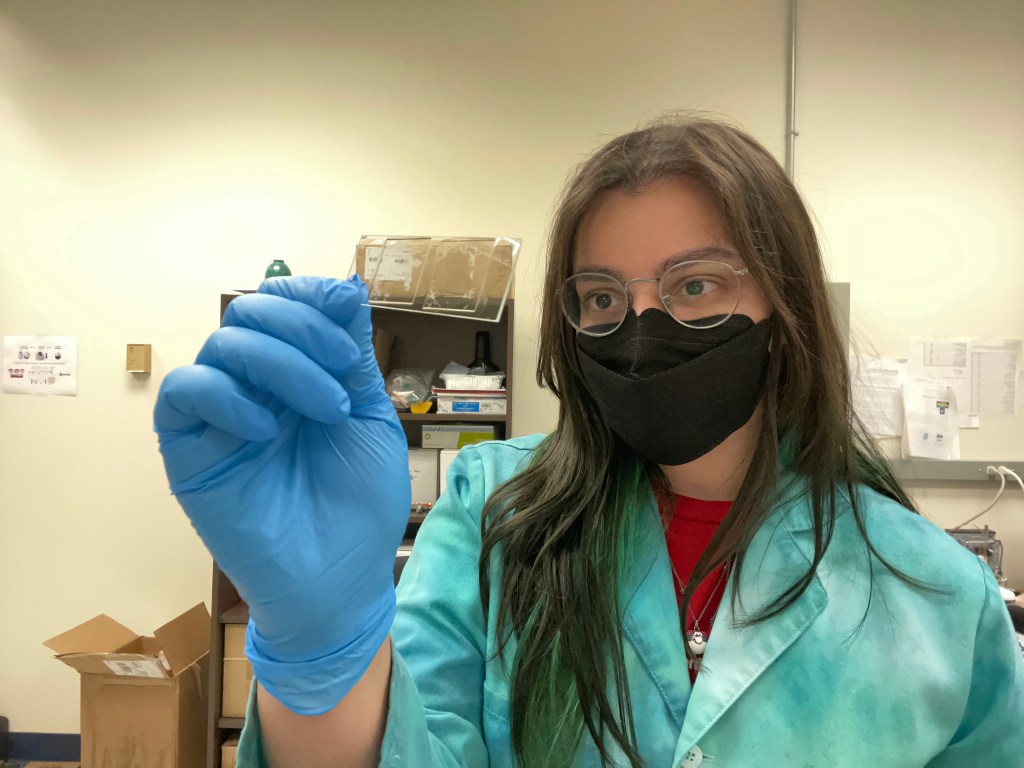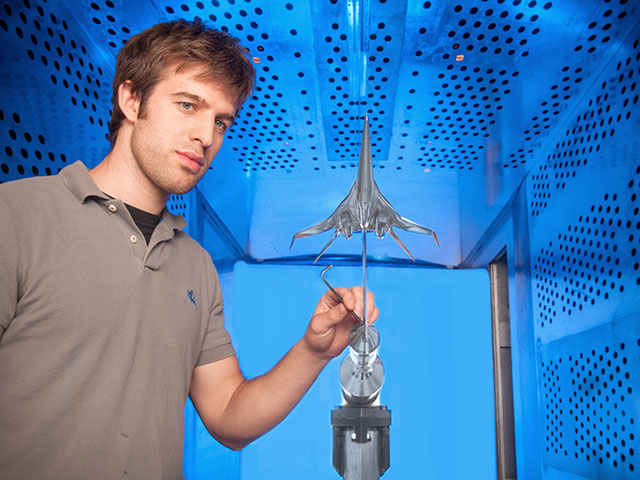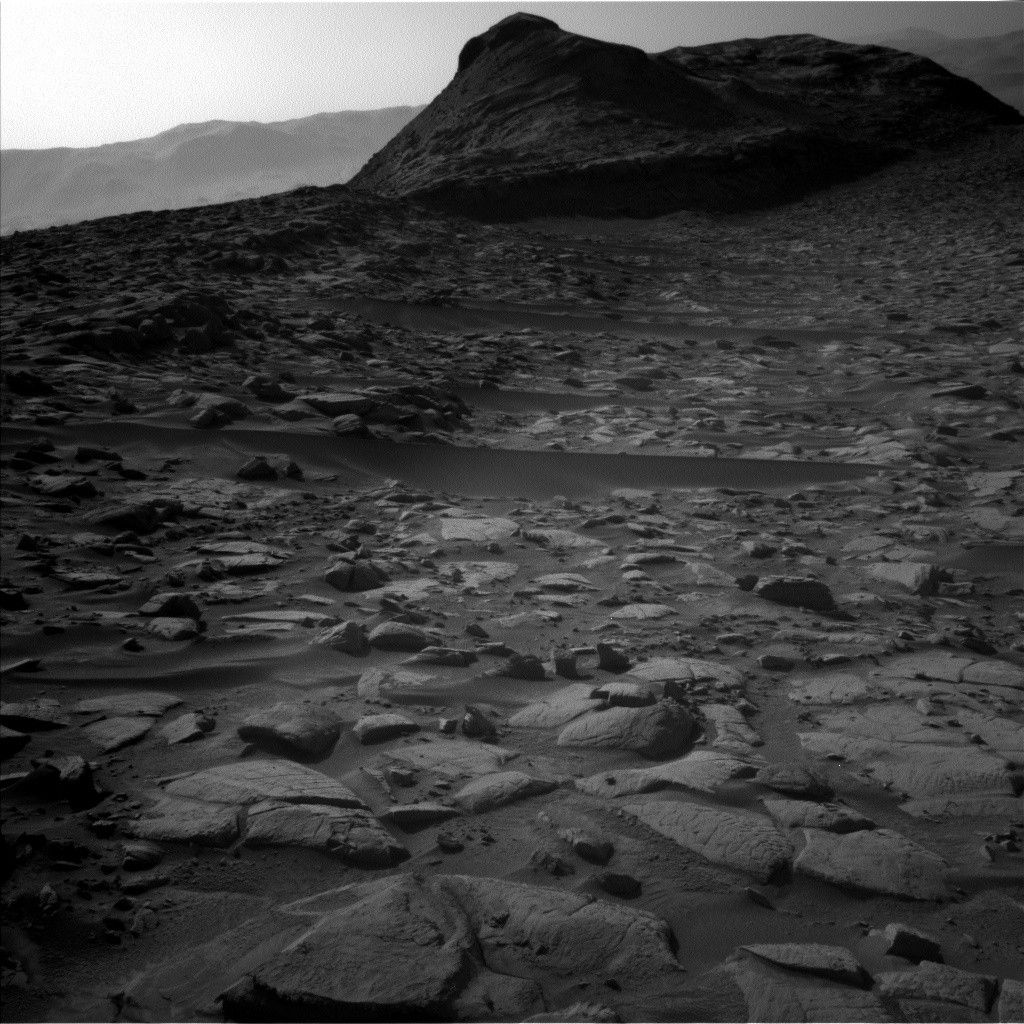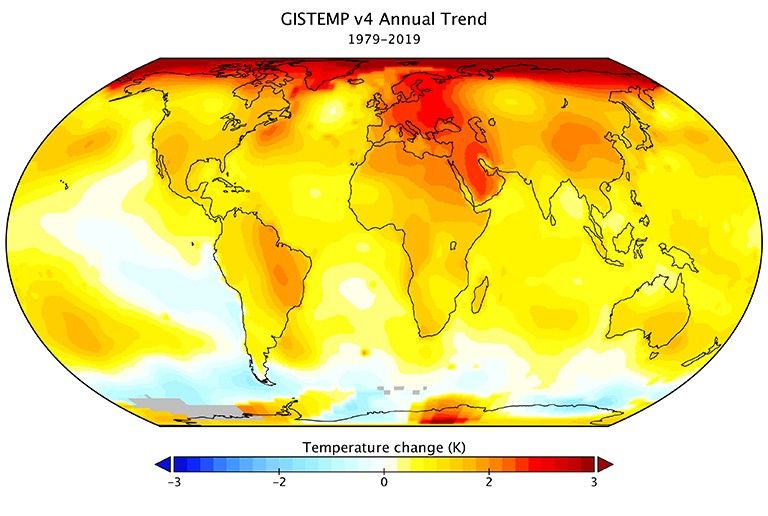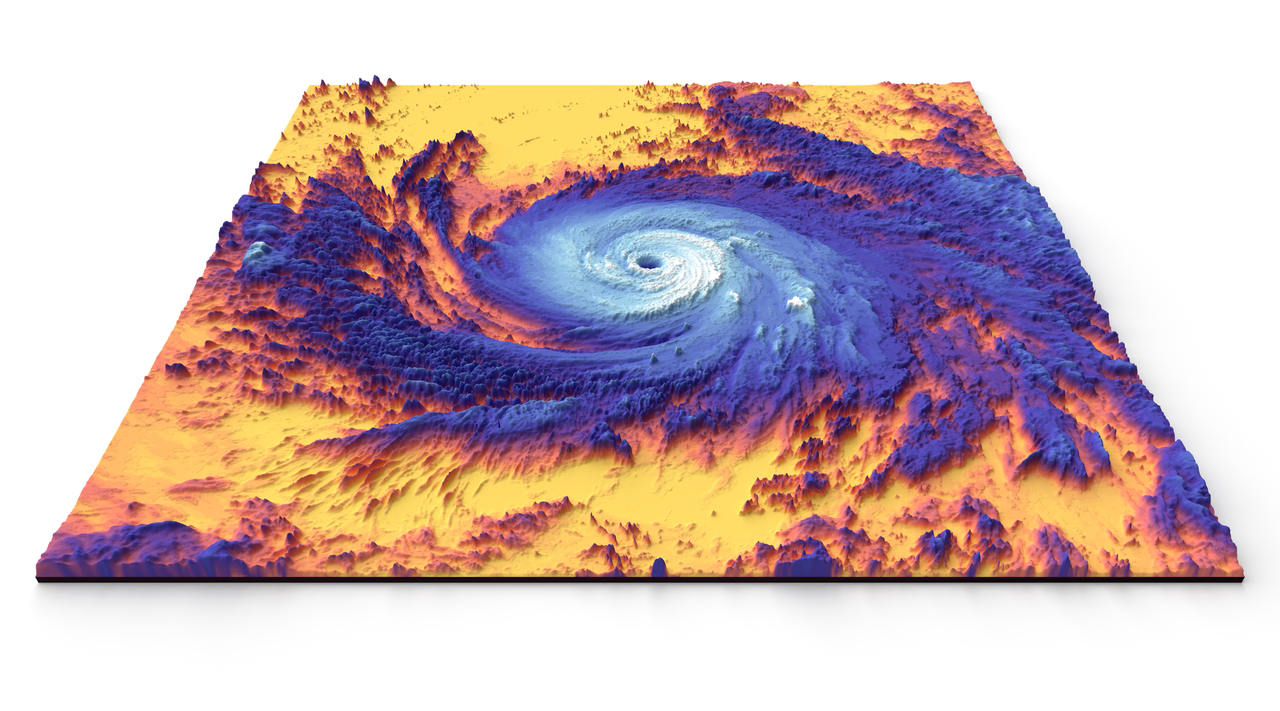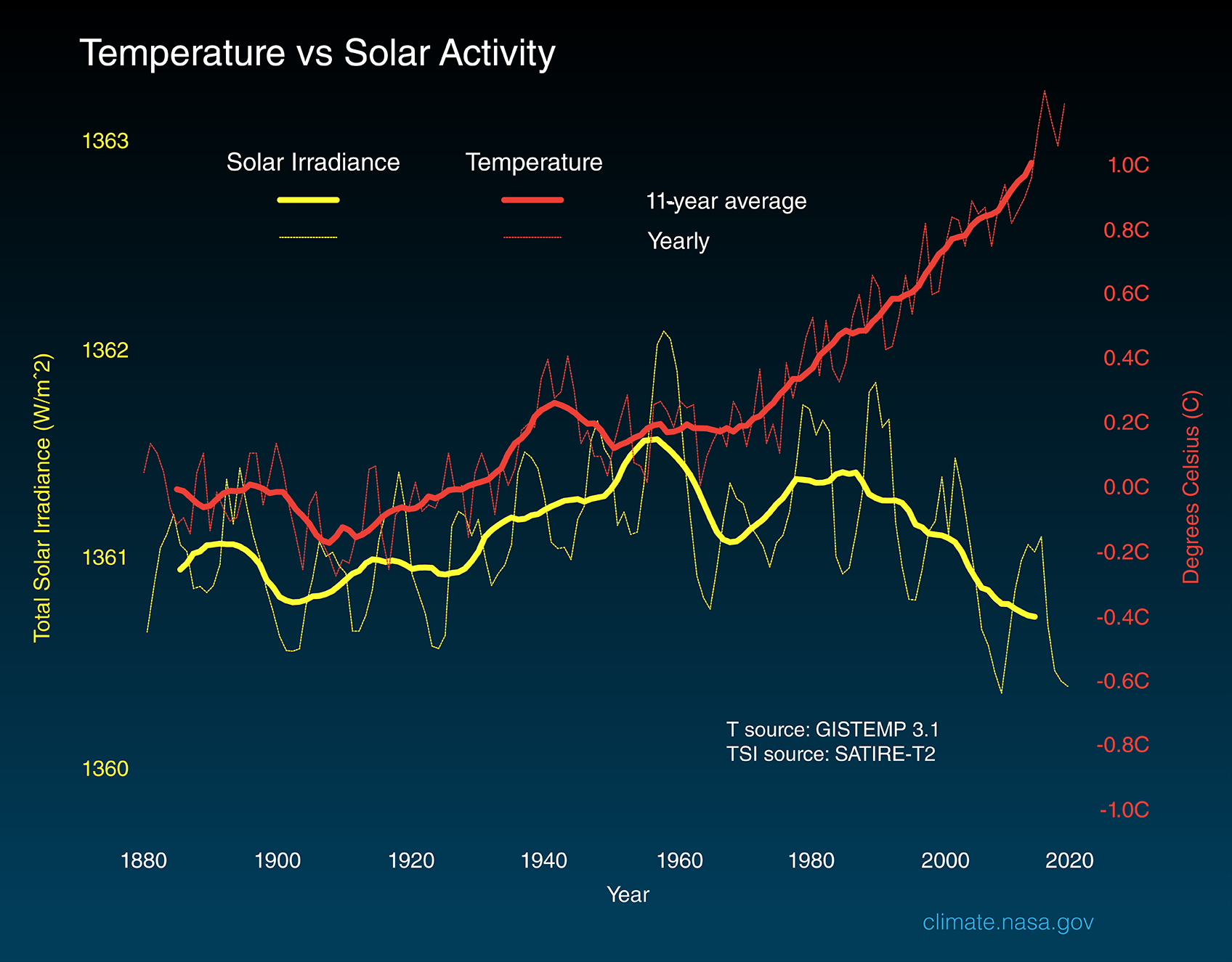Heliophysics Big Idea 1.3
Framework for Heliophysics Education
Quick Facts
The Sun’s energy drives Earth’s climate, but the climate is in a delicate balance and is changing due to human activity.
Guiding Questions
-
Introductory Learner (K-5)
How are weather and climate different?K-PS3-1. Make observations to determine the effect of sunlight on Earth’s surface.
K-PS3-2. Use tools and materials to design and build a structure that will reduce the warming effect of sunlight on an area.
3-ESS2-2. Obtain and combine information to describe climates in different regions of the world.
3-LS4-4. Make a claim about the merit of a solution to a problem caused when the environment changes and the types of plants and animals that live there may change.
4-ESS3-1. Obtain and combine information to describe that energy and fuels are derived from natural resources and their uses affect the environment.
4-PS3-2. Make observations to provide evidence that energy can be transferred from place to place by sound, light, heat, and electric currents.
5-ESS2-1. Develop a model using an example to describe ways the geosphere, biosphere, hydrosphere, and/or atmosphere interact. -
Intermediate Learner (6-8)
Is the Sun getting hotter?MS-ESS2-6. Develop and use a model to describe how unequal heating and rotation of the Earth cause patterns of atmospheric and oceanic circulation that determine regional climates.
MS-ESS3-3. Apply scientific principles to design a method for monitoring and minimizing a human impact on the environment.
MS-ESS3-5. Ask questions to clarify evidence of the factors that have caused the rise in global temperatures over the past century.
MS-PS1-4. Develop a model that predicts and describes changes in particle motion, temperature, and state of a pure substance when thermal energy is added or removed.
MS-PS3-3. Apply scientific principles to design, construct, and test a device that either minimizes or maximizes thermal energy transfer.
MS-PS3-4. Plan an investigation to determine the relationships among the energy transferred, the type of matter, the mass, and the change in the average kinetic energy of the particles as measured by the temperature of the sample. -
Advanced Learner (9-12+)
How does the changing shape of the Earth's orbit over hundreds of thousands of years cause climate change?HS-ESS1-4. Use mathematical or computational representations to predict the motion of orbiting objects in the solar system.
HS-ESS2-4. Use a model to describe how variations in the flow of energy into and out of Earth’s systems result in changes in climate.
HS-PS2-4. Use mathematical representations of Newton’s Law of Gravitation and Coulomb’s Law to describe and predict the gravitational and electrostatic forces between objects.

November 30, 2019
Temperature vs Solar Activity
This graph compares global surface temperature changes (red line) and the Sun’s energy received by the Earth (yellow line) in watts (units of energy) per square meter since 1880.
The lighter/thinner lines show the yearly levels, while the heavier/thicker lines show the 11-year average trends. Eleven-year averages are used to reduce the year-to-year natural noise in the data, making the underlying trends more obvious.
The amount of solar energy Earth receives has followed the Sun’s natural 11-year cycle of small ups and downs, with no net increase since the 1950s. Over the same period, global temperature has risen markedly. It is therefore extremely unlikely that the Sun has caused the observed global temperature warming trend over the past half-century.
Related Topics By Level For Communicating Heliophysics
Atmosphere
What should learners know about this topic at each level?
Introductory: Our atmosphere consists of 21% oxygen, 78% nitrogen and 0.9% argon. There is also an important trace gas called carbon dioxide. Without it, our planet would be too cold for liquid water and life.
Intermediate: The atmosphere is a gaseous envelope surrounding and protecting our planet from the intense radiation of the Sun and serves as a key interface between the terrestrial and ocean cycles. Its inner layers closest to the surface are responsible for clouds and weather, while the outer layers above the stratosphere include the ozone layer, which protects life from ultraviolet light. Our atmosphere shields us from all solar radiation in the x-ray and gamma-ray bands of the EM spectrum, and some of the ultraviolet light. It also shields us from many forms of infrared and radio wavelength light.
Advanced: Our atmosphere does not have the same density and temperature at all heights. It is heated by absorbing radiation from the sun, and its ozoine layer blocks nearly all ultraviolet light. The upper stratosphere is strongly affected and heated by solar activity that produces x-rays. Its temperature and thickness is highest during sunspot maximum when the sun is most active.
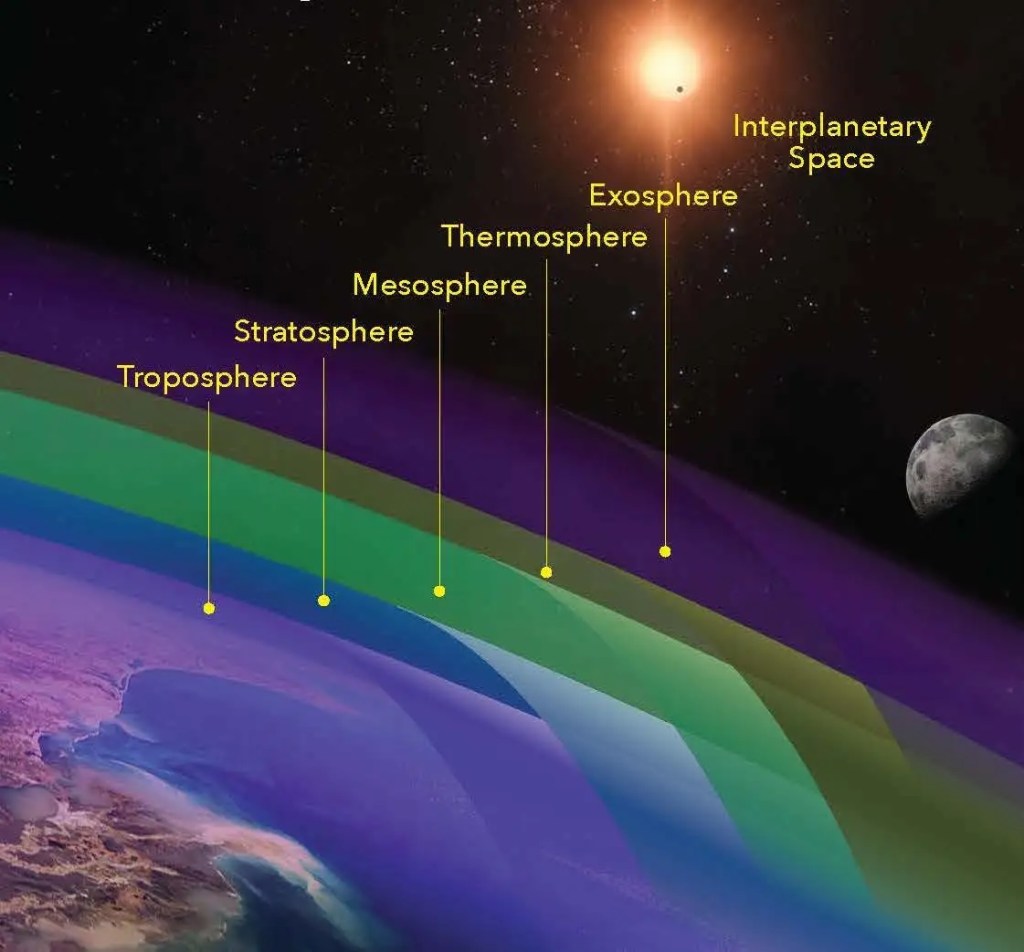
Climate Change
What should learners know about this topic at each level?
Introductory: Natural climate change has been going on since the dawn of Earth's history as landmasses have moved around, volcanoes have emitted gases into the atmosphere, and as the distance between the Sun and earth have changed over the eons. Today, human activity has had a noticeable change in our climate that has accelerated since the 1800s due to fossil fuel burning.
Intermediate: Scientists attribute the global warming trend observed since the mid-20th century to the human expansion of the "greenhouse effect" — warming that results when the atmosphere traps heat radiating from Earth toward space. Over the last century, burning of fossil fuels like coal and oil has increased the concentration of atmospheric carbon dioxide (CO2). This increase happens because the coal or oil burning process combines carbon with oxygen in the air to make CO2.
Advanced: Greenhouse gases are part of Earth's atmosphere and consist of carbon dioxide, methane, ozone, nitrous oxide, chlorofluorocarbons, and water vapor. Part of what makes Earth so amenable is its natural greenhouse effect, which maintains an average temperature of 15 °C (59 °F) . However, in the last century, human activities, primarily from burning fossil fuels that have led to the release of carbon dioxide and other greenhouse gases into the atmosphere, have disrupted Earth's energy balance. This has led to an increase in carbon dioxide in the atmosphere and ocean. The level of carbon dioxide in Earth’s atmosphere has been rising consistently for decades and traps extra heat near Earth's surface, causing temperatures to rise.
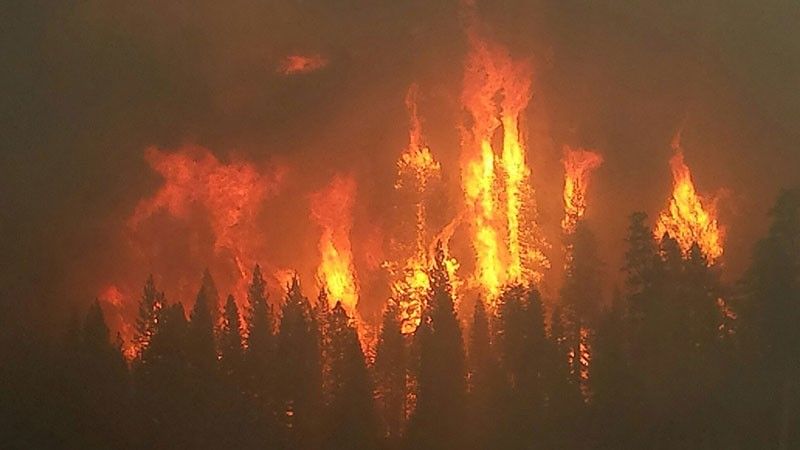
Energy
What should learners know about this topic at each level?
Introductory: The Sun warms the land, air, and water because these materials absorbe the sunlight energy that falls upon them. Sunlight can be converted into electricity using solar panels as a way to run many devices.
Intermediate: There are a great variety of electromagnetic waves: radio waves, microwaves, infrared waves, visible light, ultraviolet rays, X-rays, and gamma rays. These wavelengths vary from radio waves, the longest, to gamma rays, the shortest. Energy in solar processes moves and changes form. Electrical energy can be generated from sunlight, and can be transformed into almost any other form of energy. Energy from the Sun is available indefinitely.
Advanced: Sunlight is the ultimate source of most of the energy we use. The energy in fossil fuels such as oil and coal comes from energy that plants captured from the Sun long ago. Solar panels absorbe sunlight and convert it directly into electricity. On the Sun, magnetic fields contain stored energy, which in a process called magnetic reconnection, can be released to heat up and accelerate local plasma.
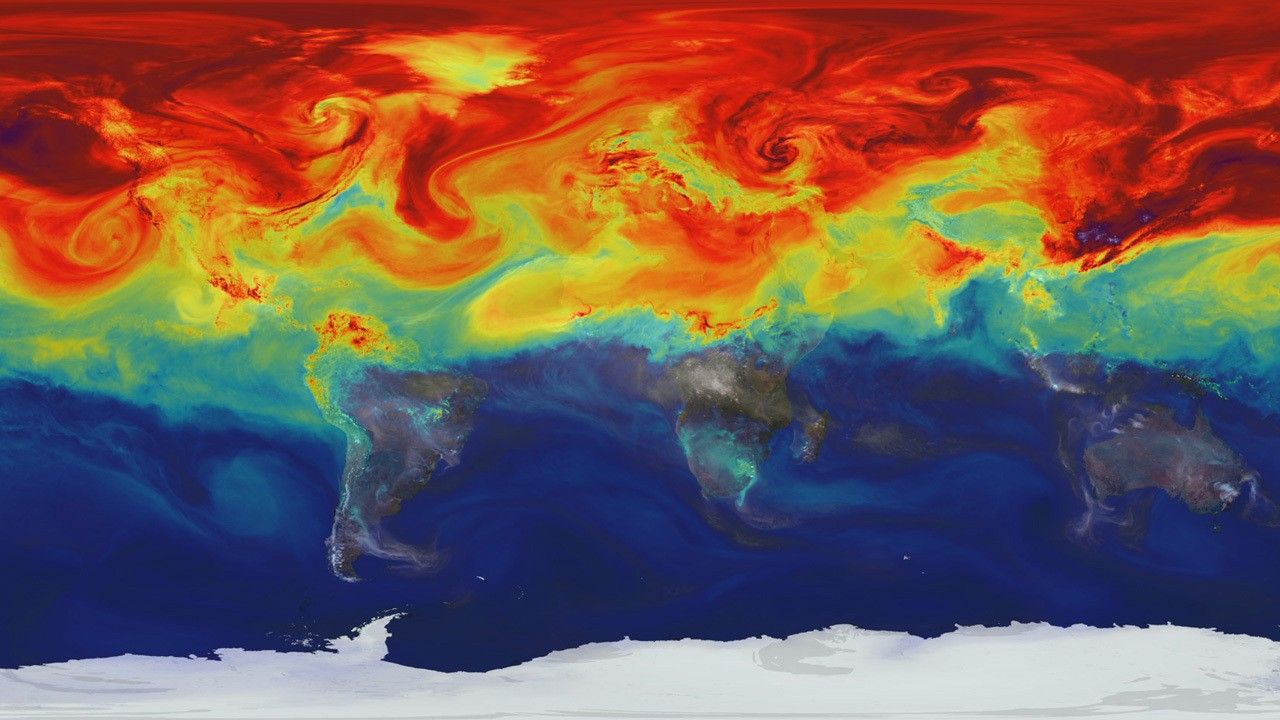
Greenhouse Effect
What should learners know about this topic at each level?
Introductory: Natural climate change has been going on since the dawn of Earth's history as landmasses have moved around, volcanoes have emitted gases into the atmosphere, and as the distance between the Sun and earth have changed over the eons. Today, human activity has had a noticeable change in our climate that has accelerated since the 1800s due to fossil fuel burning.
Intermediate: Scientists attribute the global warming trend observed since the mid-20th century to the human expansion of the "greenhouse effect" — warming that results when the atmosphere traps heat radiating from Earth toward space. Over the last century, burning of fossil fuels like coal and oil has increased the concentration of atmospheric carbon dioxide (CO2). This increase happens because the coal or oil burning process combines carbon with oxygen in the air to make CO2.
Advanced: Greenhouse gases are part of Earth's atmosphere and consist of carbon dioxide, methane, ozone, nitrous oxide, chlorofluorocarbons, and water vapor. Part of what makes Earth so amenable is its natural greenhouse effect, which maintains an average temperature of 15 °C (59 °F) . However, in the last century, human activities, primarily from burning fossil fuels that have led to the release of carbon dioxide and other greenhouse gases into the atmosphere, have disrupted Earth's energy balance. This has led to an increase in carbon dioxide in the atmosphere and ocean. The level of carbon dioxide in Earth’s atmosphere has been rising consistently for decades and traps extra heat near Earth's surface, causing temperatures to rise.
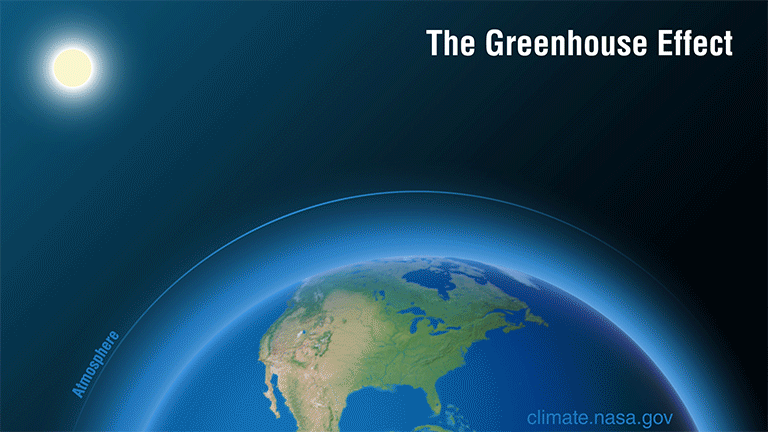
Radiation
What should learners know about this topic at each level?
Introductory: Outside the protective cocoon of the Earth’s atmosphere is a universe full of radiation – it is all around us. Radiation can be created by humans (microwaves, cell phones, radios, light bulbs, diagnostic medical applications such as x-rays) or naturally occurring.
Intermediate: Radiation is a form of energy that is emitted in the form of rays, electromagnetic waves, and/or particles. Most of the radiation that the Sun emits is in the form of visible light. Energy appears in different forms and can be transformed and transported within the Sun’s system.
Advanced: Naturally occuring sources of radiation are the Sun, radioactive elements in the Earth’s crust, radiation trapped in the Earth’s magnetic field, stars, and other astrophysical objects like quasars or galactic centers). In some cases, radiation can be seen (visible light) or felt (infrared radiation), while other forms—like x-rays and gamma rays—are not visible and can only be observed with special equipment. Space radiation is different from the kinds of radiation we experience here on Earth. Space radiation is comprised of atoms in which electrons have been stripped away as the atom accelerated in interstellar space to speeds approaching the speed of light – eventually, only the nucleus of the atom remains.
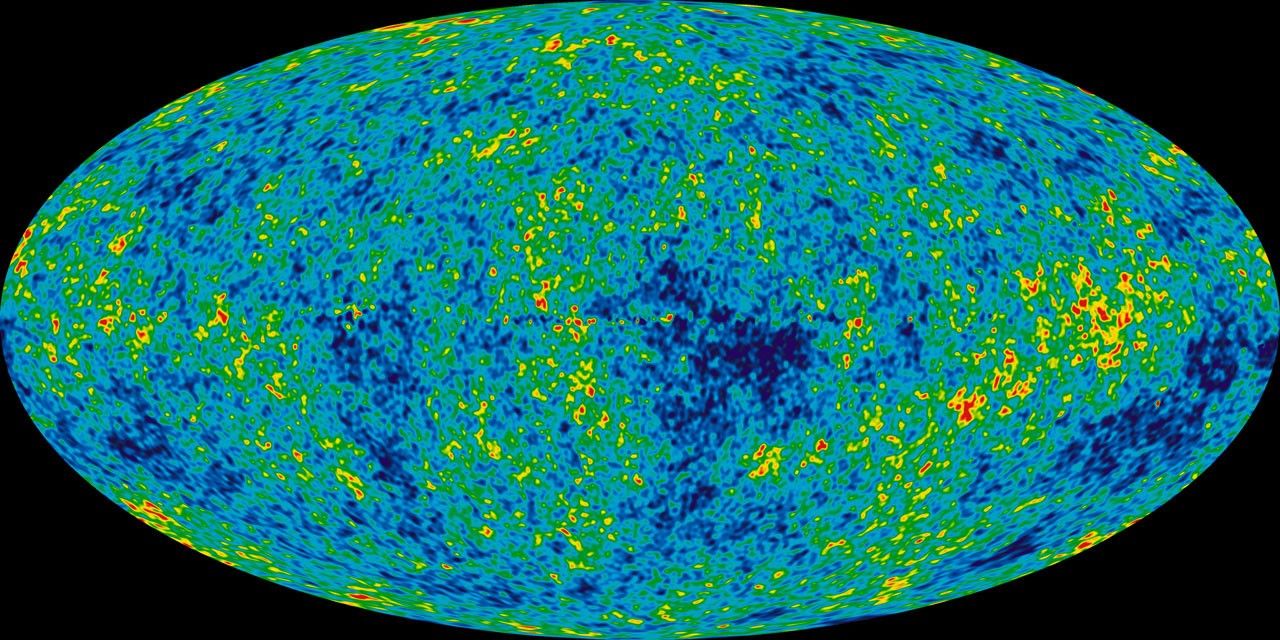
Heliophysics Resource Database
Use the guiding questions above to explore resources at each level or go directly to our database to search for resources by level, NGSS performance expectation, topic, and mission.
Resource Database